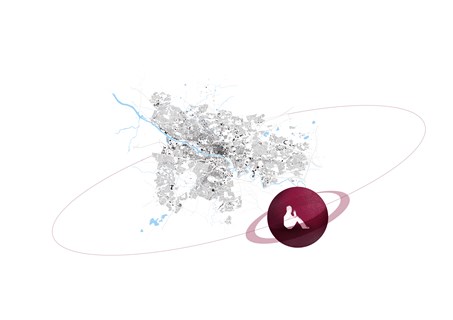Structures of Self-Estrangement
Combating alienation, in the age of information, by rethinking education, to help people find purpose and follow their passions.
This Project is heavily influenced by Jimmy Reid’s 1972 speech which identified the potential
to combat the evermore pernicious issue of alienation in society by rethinking our concept of
education. Proposing that through helping people determine and explore passions and thus help to
find purpose in their lives. This project asks what would that architecture be like and how could it
be effectively applied specifically to Glasgow’s context? With a vast industrial infrastructure
remaining across the city in the form of disused railway lines, buildings in disrepair, and gaps in
the urban grid, an opportunity arises. A problem as deep rooted as alienation on a city-wide scale
requires several interventions to effectively combat the issue. This proposal consists of 4 architectural
types of various scales dotted around the city using these existing structures to help facilitate
the user to discover their passion.
1 - To Instigate - A small scale intervention in everyday spaces that helps to capture those who
are alienated get the ball rolling.
2 - To Explore - A large variety learning centre based around the 8 methods of learning a flexible
space with to try new things and expose those alienated to these things.
3 - To Contemplate - Reviving the disused railway line links to encourage the creative process.
4 - To Implement - Tailoring various disused structures for specific purposes or trades.
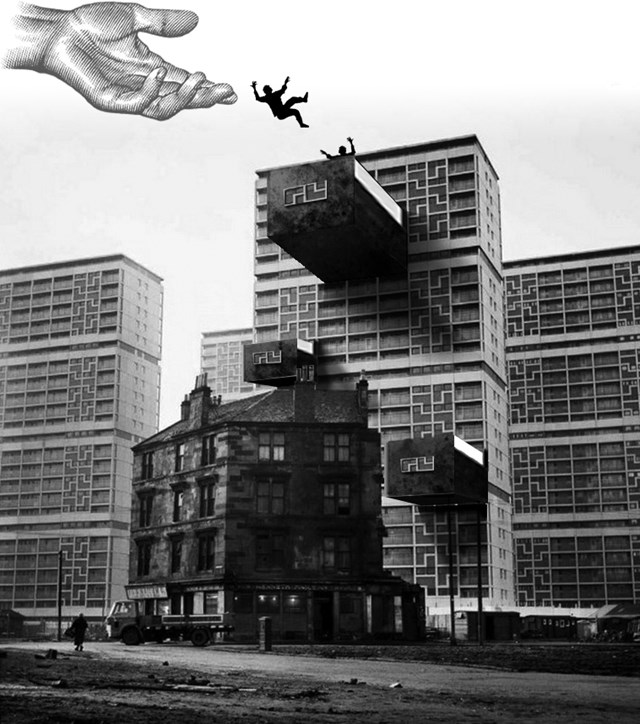
Image depicting architecture that alienates
This image is a literal representation of a line in Jimmy Reid's alienation speech made to Glasgow University in 1975. "When you think of some of the high flats around us, it can hardly be an accident that they are as near as one could get to an architectural representation of a filing cabinet."
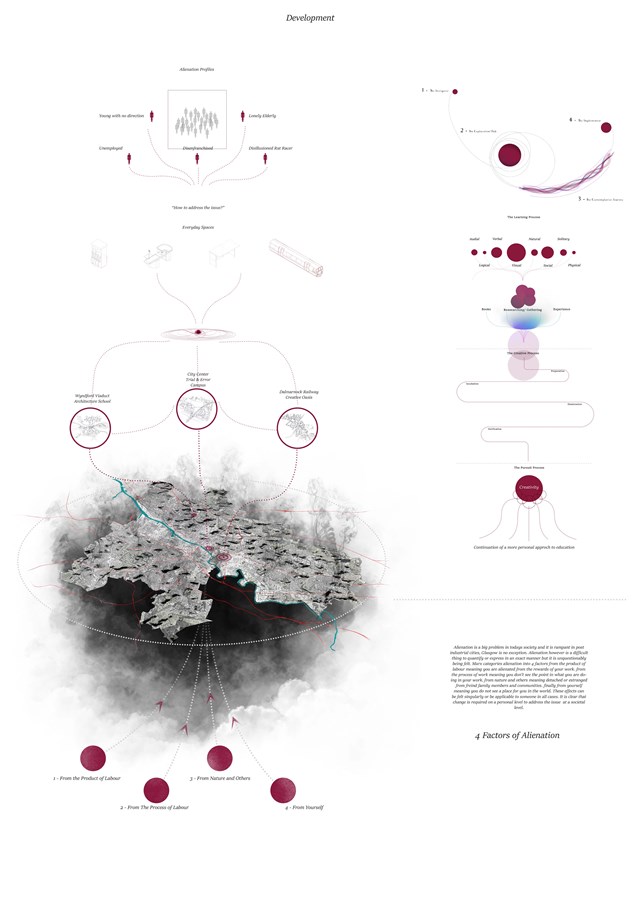
Design Development
This image considers the effects of alienation on Glasgow and how it may be addressed through architectural intervention that aspires to help those alienated find and follow their passion. This is broken down into 4 steps and this image maps the core process of the proposal as a whole
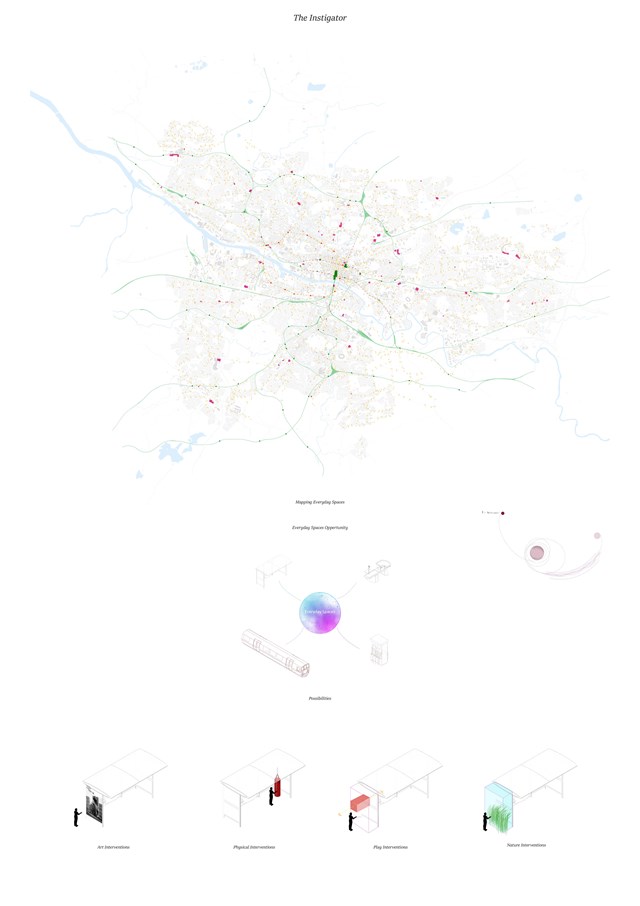
A map of everyday spaces
Bus stops, supermarkets, railway stations ect. Core aspects of the logistics of a society present a unique opportunity to engage with people, as these places have the biggest potential reach to catch people who may be alienated. This can therefore direct them towards tackling this issue within their own personal lives.
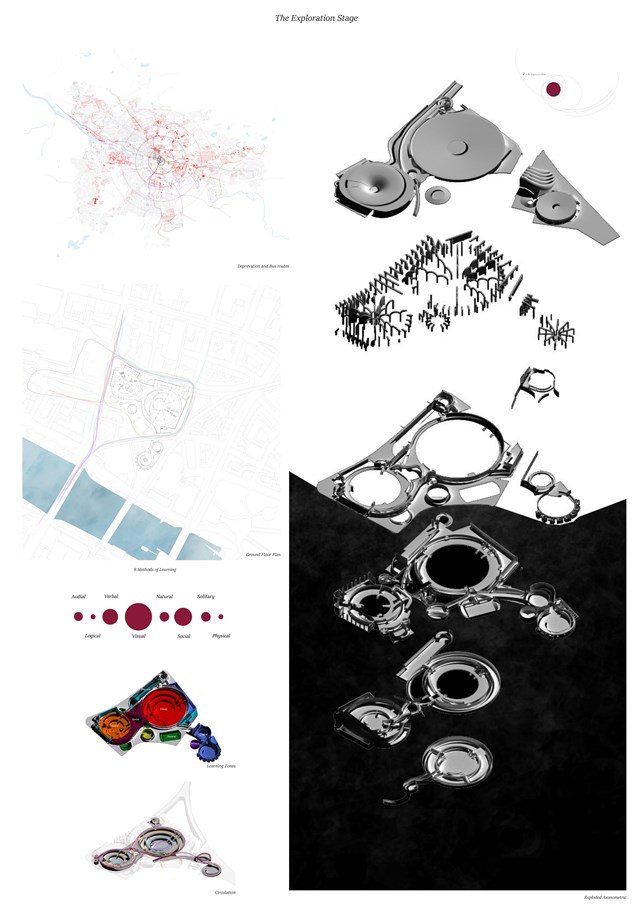
The exploration stage
A centre that is designed to accommodate the 8 fundamental methods of learning these are Audial Visual Verbal Logical Social Solitary Natural and Physical. This step provides the stage for a series of internal pavilions that would allow for the exploration or trial of a particular passion or field for people to try their hand at various different skills. The space is open and flexible to encourage dialogue and cross overs between the various disciplines as well as being interchangeable to accommodated this diverse range of activities, with circulation oriented by an open loop allowing those inside to explore freely. The site is located within a bus turning circle in the city centre so that people passing through can stumble into a specific thing that maybe helps direct them towards what their passion is. The hierarchy is flipped so the power to see the activities going on in the building are with people on the street designed to encourage them to explore.

The exploration stage in depth
This shows the various use types the main spaces could be used for and shows how open, visible and flexible the main space is in order to allow for the crossover of skills from the various skill pavilions allocated a certain footprint inside. This main space would be full of various pavilions that are specific to a particular interest or passion. The diagrams show how people who get off the bus often from impoverished communities could find their way into this space and begin exploring by trying out a wide range of skills.
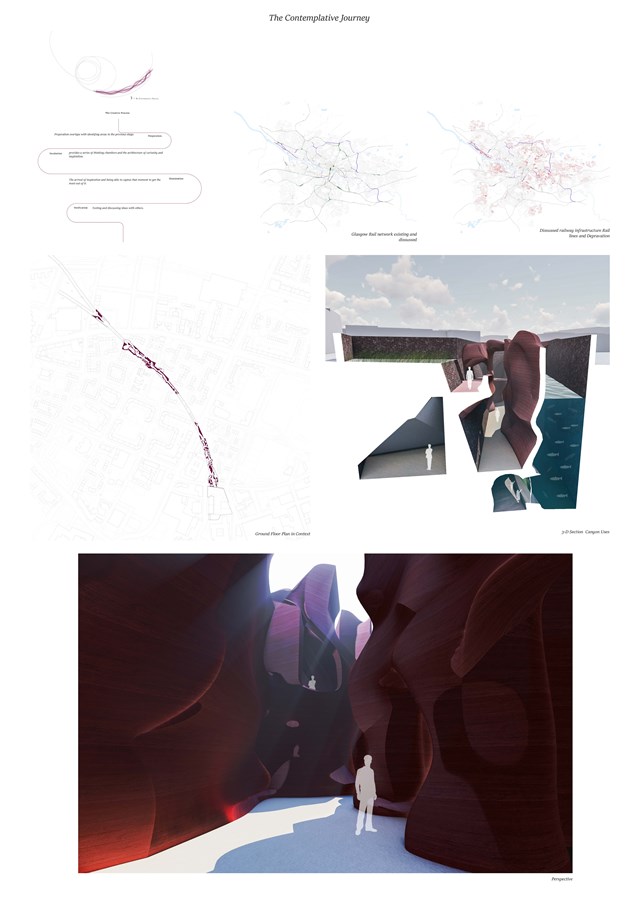
The Contemplative Journey
Once a passion has been explored this next step helps to make the decision of what to do next. Highly influenced by antelope canyon in Utah, it is an outdoor canyon like structure that operates along the various disused train tacks in Glasgow (this particular one runs through Dalmarnock) providing much need green space and encouraging curiosity. These walks also cater to the creative process and help people think creatively, fuel curiosity and help people obtain their ideas. Along the route it has various routes or paths that allow for each journey through to be different as well as providing 4 key areas dotted through the route that help to make better use of the creative process. 1 preparation a gathering and resource base space such as open air libraries 2 incubation various nooks to sit and write things down or just talk 3 illumination - moments of dark and light to encourage curiosity and a state of play 4 verification - forum spaces to allow for public speaking and testing This also provides a safe haven pedestrian walkway without the need to cross roads connecting the community to the city centre
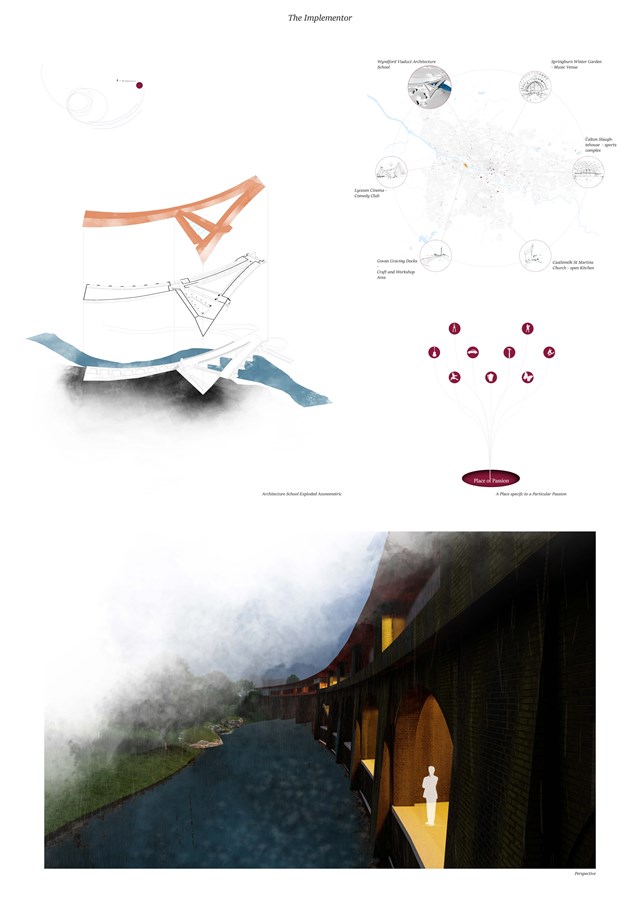
The implementer
This step focuses on a particular subject of passion that allows people to pursue that particular passion. It is essentially a school dedicated to that particular subject, these subjects would vary across the city using the currently disused pre existing industrial infrastructure and architecture of Glasgow. The various uses had to be attuned to the specific traits of the people of Glasgow's character so 6 possibilities were identified across the city that could help celebrate and define the character of Glasgow 1 Springburn winter gardens becomes a concert hall or music school 2 Calton Slaughterhouse becomes a sports complex 3 Castlemilk Church becomes an open Kitchen 4 Govan Graving docks becomes independent workshops 5 Lyceum Cinema becomes a comedy club 6 The example explored is a school of architecture on the wyndford viaduct being that the main route into the architecture profession is highly steeped in academia and as a result may remove potentially brilliant architects from ever even thinking about becoming one, so this result is more open and direct so that anyone that wants to explore this can.
